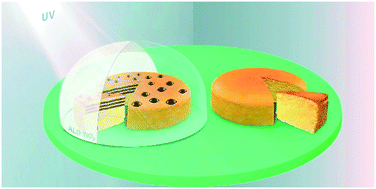Covalent graphite modification by low-temperature photocatalytic oxidation using a titanium dioxide thin film prepared by atomic layer deposition†
Abstract
Oxidative modification of graphene-based materials is an attractive route to functional materials. The use of strong oxidants to achieve surface modification of the carbon often leads to poor uniformity and limited reproducibility. Photocatalytic oxidation is a milder method. In this work, graphite is surface oxidized using an anatase thin photocatalytic film with a thickness of 22.5 nm facing the graphite surface to be oxidized. The high UV light transparency (95%) of the supported titania film simplified the experimental setup. The titania thin film was prepared using atomic layer deposition (ALD). Excellent oxidation uniformity and reaction reproducibility are achieved. By avoiding the use of chemical reagents there is no chemical contamination. Graphite photo-oxidation with the titania film prepared with ALD is much faster than with a powdery photocatalyst. The photocatalytic process runs efficiently with air containing water vapor. High resolution scanning electron microscopy (HRSEM), Raman and X-ray photoelectron spectroscopy (XPS) and atomic force microscopy (AFM) confirmed the formation of hydroxyl, epoxy and carbonyl functional groups. ALD is a suitable method for thin film preparation rendering this photocatalytic process suitable for scale-up and automation. Photocatalytically oxidized graphite (POG) electrodes are a potential application.



 Please wait while we load your content...
Please wait while we load your content...